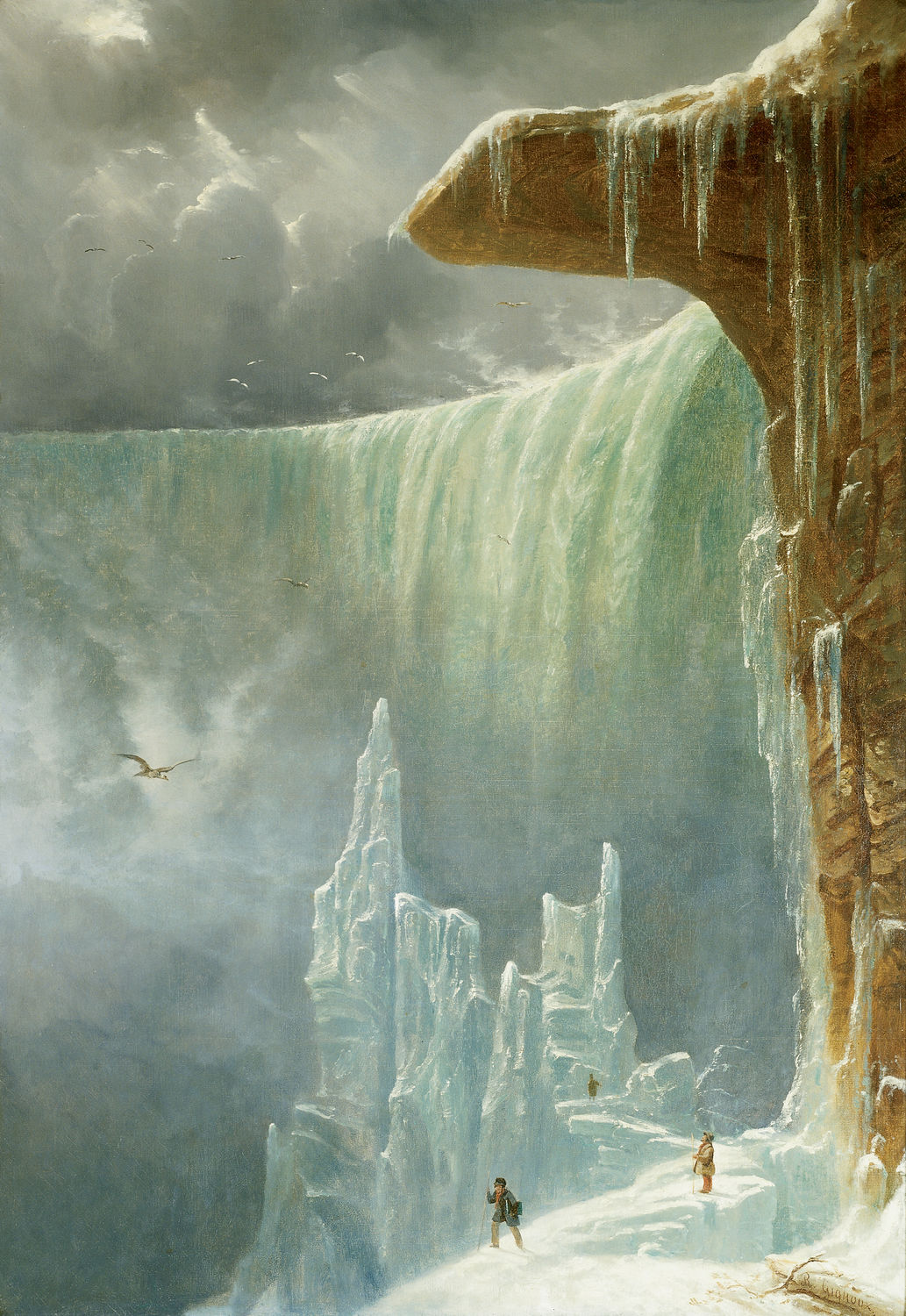
| Title | Niagara, The Table Rock—Winter |
| Artist/Maker | François Régis Gignoux ( 1816 - 1882 ) |
| Date | 1847 ca. |
| Medium | Oil on canvas |
| Dimensions | Sight: h. 52.5 x w. 36.125 in. (h. 133.35 x w. 91.7575 cm)
Framed: h. 66.125 x w. 49 in. (h. 167.9575 x w. 124.46 cm) |
| Credit Line | U.S. Senate Collection |
| Accession Number | 33.00020.000 |
François Régis Gignoux arrived in the United States from France in 1840 and opened a studio in Brooklyn, New York. A student of Paul Delaroche and schooled in the history of European art, Gignoux acquired a manner and a collection of technical shortcuts that allowed him to paint landscapes secondhand from prints and other paintings, employing his own imaginative additions. Gignoux wisely took the landscape in winter as his principal subject, becoming the only well-known member of the Hudson River School painters to concentrate on that season. He did so with considerable charm and, in this particular instance, picturesque romanticism.
Gignoux in all probability would have visited Niagara, the New World’s most famous landscape spectacle, before beginning his series of paintings of the falls. Skilled as he was in technical shortcuts, however, he would not have gone tramping about in the cold snow and dangerous ice to make sketches from nature as Frederic Church would do in 1856 in preparation for his 1857 Niagara. Instead, when preparing his landscape (the first large painting of the falls in winter ever made), Gignoux would have selected his view—or rather, composition—and painted it according to pictorial formulas.
The viewpoint is a suspended one, well below Table Rock, but well above an icy shelf upon which three widely spaced figures are seen. The nearest one, an artist, and by clever implication Gignoux himself, carries a staff and a portfolio. Table Rock—dark brown, shadowed, and deeply undercut—looms over the picture, even over the falls itself, in an ominous, nearly animate way. The steel-gray sky sits on the rim of the chilly blue-green “water sheet.” Most remarkable is the visionary ice cathedral that rises from the bottom of the canvas. This artistic invention is meant to attest to the presence of God and the accessibility of faith and hope through the invocation of the medieval Gothic cathedral. Rising toward the threatening overhang of rock and the glowering sky, the ice cathedral is given a specifically American nationalistic inflection by the huge eagle flying toward it out of the luminous mists. It is perhaps doubtful that Gignoux intended any specific reference to current political and social tensions, but his choice of Table Rock as an omen of potential disaster was nonetheless appropriate. In 1850, as the United States crept closer and closer to civil war, the giant table finally collapsed into the abyss.
Charles Carroll VI of Maryland acquired Gignoux’s Niagara, The Table Rock—Winter shortly after its execution. Caroline Carroll, his widow, left instructions upon her death that the painting should be donated to the U.S. government. Alice Louisa Thompson, Caroline Carroll’s sister, presented the painting to Congress on her behalf; it was accepted by the Joint Committee on the Library on March 2, 1901.
Gignoux exhibited frequently in New York, Philadelphia, and Boston. He was a member of the National Academy of Design and the first president of the Brooklyn Art Academy. Gignoux exhibited Niagara, The Table Rock–Winter at the National Academy in 1847. In the Corcoran Gallery of Art’s 1985 exhibition catalogue Niagara, Jeremy Elwell Adamson wrote of the Senate’s painting: “Few nineteenth-century portrayals of Niagara match the Gothic horror of this gloomy, ice-girt depiction.” [1] Gignoux painted four wintertime scenes of Niagara as well as a summertime view. His Niagara Falls in Winter (1858) was exhibited in 1859 along with Frederic Church’s monumental view of Niagara. Gignoux’s works were considered highly collectible during his day, and several of his winter paintings were reproduced and circulated as engraved prints. The artist returned to France in 1870, where he died 12 years later.
1. Jeremy Elwell Adamson, Niagara: Two Centuries of Changing Attitudes, 1697-1901 (Washington, D.C.: Corcoran Gallery of Art, 1985), 57.